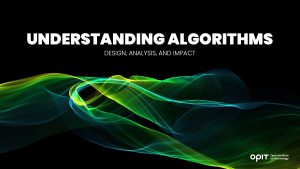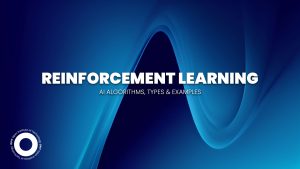
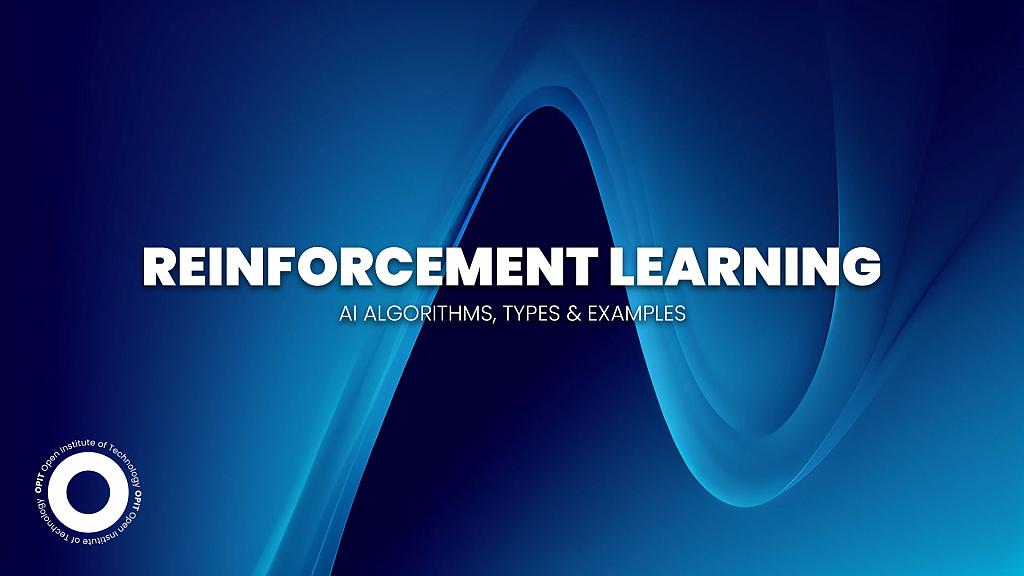
Reinforcement learning is a very useful (and currently popular) subtype of machine learning and artificial intelligence. It is based on the principle that agents, when placed in an interactive environment, can learn from their actions via rewards associated with the actions, and improve the time to achieve their goal.
In this article, we’ll explore the fundamental concepts of reinforcement learning and discuss its key components, types, and applications.
Definition of Reinforcement Learning
We can define reinforcement learning as a machine learning technique involving an agent who needs to decide which actions it needs to do to perform a task that has been assigned to it most effectively. For this, rewards are assigned to the different actions that the agent can take at different situations or states of the environment. Initially, the agent has no idea about the best or correct actions. Using reinforcement learning, it explores its action choices via trial and error and figures out the best set of actions for completing its assigned task.
The basic idea behind a reinforcement learning agent is to learn from experience. Just like humans learn lessons from their past successes and mistakes, reinforcement learning agents do the same – when they do something “good” they get a reward, but, if they do something “bad”, they get penalized. The reward reinforces the good actions while the penalty avoids the bad ones.
Reinforcement learning requires several key components:
- Agent – This is the “who” or the subject of the process, which performs different actions to perform a task that has been assigned to it.
- Environment – This is the “where” or a situation in which the agent is placed.
- Actions – This is the “what” or the steps an agent needs to take to reach the goal.
- Rewards – This is the feedback an agent receives after performing an action.
Before we dig deep into the technicalities, let’s warm up with a real-life example. Reinforcement isn’t new, and we’ve used it for different purposes for centuries. One of the most basic examples is dog training.
Let’s say you’re in a park, trying to teach your dog to fetch a ball. In this case, the dog is the agent, and the park is the environment. Once you throw the ball, the dog will run to catch it, and that’s the action part. When he brings the ball back to you and releases it, he’ll get a reward (a treat). Since he got a reward, the dog will understand that his actions were appropriate and will repeat them in the future. If the dog doesn’t bring the ball back, he may get some “punishment” – you may ignore him or say “No!” After a few attempts (or more than a few, depending on how stubborn your dog is), the dog will fetch the ball with ease.
We can say that the reinforcement learning process has three steps:
- Interaction
- Learning
- Decision-making
Types of Reinforcement Learning
There are two types of reinforcement learning: model-based and model-free.
Model-Based Reinforcement Learning
With model-based reinforcement learning (RL), there’s a model that an agent uses to create additional experiences. Think of this model as a mental image that the agent can analyze to assess whether particular strategies could work.
Some of the advantages of this RL type are:
- It doesn’t need a lot of samples.
- It can save time.
- It offers a safe environment for testing and exploration.
The potential drawbacks are:
- Its performance relies on the model. If the model isn’t good, the performance won’t be good either.
- It’s quite complex.
Model-Free Reinforcement Learning
In this case, an agent doesn’t rely on a model. Instead, the basis for its actions lies in direct interactions with the environment. An agent tries different scenarios and tests whether they’re successful. If yes, the agent will keep repeating them. If not, it will try another scenario until it finds the right one.
What are the advantages of model-free reinforcement learning?
- It doesn’t depend on a model’s accuracy.
- It’s not as computationally complex as model-based RL.
- It’s often better for real-life situations.
Some of the drawbacks are:
- It requires more exploration, so it can be more time-consuming.
- It can be dangerous because it relies on real-life interactions.
Model-Based vs. Model-Free Reinforcement Learning: Example
Understanding model-based and model-free RL can be challenging because they often seem too complex and abstract. We’ll try to make the concepts easier to understand through a real-life example.
Let’s say you have two soccer teams that have never played each other before. Therefore, neither of the teams knows what to expect. At the beginning of the match, Team A tries different strategies to see whether they can score a goal. When they find a strategy that works, they’ll keep using it to score more goals. This is model-free reinforcement learning.
On the other hand, Team B came prepared. They spent hours investigating strategies and examining the opponent. The players came up with tactics based on their interpretation of how Team A will play. This is model-based reinforcement learning.
Who will be more successful? There’s no way to tell. Team B may be more successful in the beginning because they have previous knowledge. But Team A can catch up quickly, especially if they use the right tactics from the start.
Reinforcement Learning Algorithms
A reinforcement learning algorithm specifies how an agent learns suitable actions from the rewards. RL algorithms are divided into two categories: value-based and policy gradient-based.
Value-Based Algorithms
Value-based algorithms learn the value at each state of the environment, where the value of a state is given by the expected rewards to complete the task while starting from that state.
Q-Learning
This model-free, off-policy RL algorithm focuses on providing guidelines to the agent on what actions to take and under what circumstances to win the reward. The algorithm uses Q-tables in which it calculates the potential rewards for different state-action pairs in the environment. The table contains Q-values that get updated after each action during the agent’s training. During execution, the agent goes back to this table to see which actions have the best value.
Deep Q-Networks (DQN)
Deep Q-networks, or deep q-learning, operate similarly to q-learning. The main difference is that the algorithm in this case is based on neural networks.
SARSA
The acronym stands for state-action-reward-state-action. SARSA is an on-policy RL algorithm that uses the current action from the current policy to learn the value.
Policy-Based Algorithms
These algorithms directly update the policy to maximize the reward. There are different policy gradient-based algorithms: REINFORCE, proximal policy optimization, trust region policy optimization, actor-critic algorithms, advantage actor-critic, deep deterministic policy gradient (DDPG), and twin-delayed DDPG.
Examples of Reinforcement Learning Applications
The advantages of reinforcement learning have been recognized in many spheres. Here are several concrete applications of RL.
Robotics and Automation
With RL, robotic arms can be trained to perform human-like tasks. Robotic arms can give you a hand in warehouse management, packaging, quality testing, defect inspection, and many other aspects.
Another notable role of RL lies in automation, and self-driving cars are an excellent example. They’re introduced to different situations through which they learn how to behave in specific circumstances and offer better performance.
Gaming and Entertainment
Gaming and entertainment industries certainly benefit from RL in many ways. From AlphaGo (the first program that has beaten a human in the board game Go) to video games AI, RL offers limitless possibilities.
Finance and Trading
RL can optimize and improve trading strategies, help with portfolio management, minimize risks that come with running a business, and maximize profit.
Healthcare and Medicine
RL can help healthcare workers customize the best treatment plan for their patients, focusing on personalization. It can also play a major role in drug discovery and testing, allowing the entire sector to get one step closer to curing patients quickly and efficiently.
Basics for Implementing Reinforcement Learning
The success of reinforcement learning in a specific area depends on many factors.
First, you need to analyze a specific situation and see which RL algorithm suits it. Your job doesn’t end there; now you need to define the environment and the agent and figure out the right reward system. Without them, RL doesn’t exist. Next, allow the agent to put its detective cap on and explore new features, but ensure it uses the existing knowledge adequately (strike the right balance between exploration and exploitation). Since RL changes rapidly, you want to keep your model updated. Examine it every now and then to see what you can tweak to keep your model in top shape.
Explore the World of Possibilities With Reinforcement Learning
Reinforcement learning goes hand-in-hand with the development and modernization of many industries. We’ve been witnesses to the incredible things RL can achieve when used correctly, and the future looks even better. Hop in on the RL train and immerse yourself in this fascinating world.
Related posts
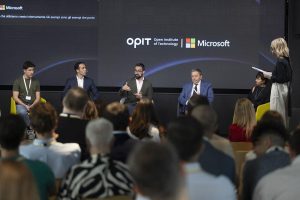
Source:
- Times of Malta, published on September 18th, 2025
4 min read
The gathering brought together academics and technology leaders from prominent European Institutions, such as Instituto de Empresa (IE University), OPIT itself and the Royal College of Arts, to explore how artificial intelligence is reshaping the university experience.
The OPIT AI Copilot has been trained on the institute’s complete academic archive, a collection created over the past three years that includes 131 courses, more than 3,500 hours of recorded lectures, 7,500 study resources, 320 certified assessments, and thousands of exercises and original learning documents.
Unlike generic AI tools, the Copilot is deeply integrated with OPIT’s learning management system, allowing it to track each student’s progress and provide tailored support.
This integration means the assistant can reference relevant sources within the learning environment, adapt to the student’s stage of study, and ensure that unreleased course content remains inaccessible.
A mobile app is also scheduled for release this autumn, that will allow students to download exercise and access other tools.
During examinations, the Copilot automatically switches to what the institute calls an “anti-cheating mode”, restricting itself to general research support rather than providing direct answers.
For OPIT’s international community of 500 students from nearly 100 countries, many of whom balance studies with full-time work, the ability to access personalised assistance at any time of day is a key advantage.
“Eighty-five per cent of students are already using large language models in some way to study,” said OPIT founder and director Riccardo Ocleppo. “We wanted to go further by creating a solution tailored to our own community, reflecting the real experiences of remote learners and working professionals.”
Tool aims to cut correction time by 30%
The Copilot will also reduce administrative burdens for faculty. It can help grade assignments, generate new educational materials, and create rubrics that allow teachers to cut correction time by as much as 30 per cent.
According to OPIT, this will free up staff to dedicate more time to teaching and direct student engagement.
At the Milan event, Rector Francesco Profumo underlined the broader implications of AI in higher education. “We are in the midst of a deep transformation, where AI is no longer just a tool: it is an environment that radically changes how we learn, teach, and create,” he said.
“But it is not a shortcut. It is a cultural, ethical, and pedagogical challenge, and to meet it we must have the courage to rethink traditional models and build bridges between human and artificial intelligence.”
OPIT was joined on stage by representatives from other leading institutions, including Danielle Barrios O’Neill of the Royal College of Art, who spoke about the role of AI in art and creativity, and Francisco Machin of IE University, who discussed applications in business and management education.
OPIT student Asya Mantovani, also employed at a leading technology and consulting firm in Italy, gave a first-hand account of balancing professional life with online study.
The assistant has been in development for the past eight months, involving a team of OPIT professors, researchers, and engineers.
Ocleppo stressed that OPIT intends to make its AI innovations available beyond its own institution. “We want to put technology at the service of higher education,” he said.
“Our goal is to develop solutions not only for our own students, but also to share with global institutions eager to innovate the learning experience in a future that is approaching very quickly.”
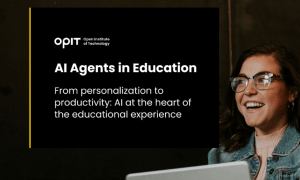
From personalization to productivity: AI at the heart of the educational experience.
Click this link to read and download the e-book.
At its core, teaching is a simple endeavour. The experienced and learned pass on their knowledge and wisdom to new generations. Nothing has changed in that regard. What has changed is how new technologies emerge to facilitate that passing on of knowledge. The printing press, computers, the internet – all have transformed how educators teach and how students learn.
Artificial intelligence (AI) is the next game-changer in the educational space.
Specifically, AI agents have emerged as tools that utilize all of AI’s core strengths, such as data gathering and analysis, pattern identification, and information condensing. Those strengths have been refined, first into simple chatbots capable of providing answers, and now into agents capable of adapting how they learn and adjusting to the environment in which they’re placed. This adaptability, in particular, makes AI agents vital in the educational realm.
The reasons why are simple. AI agents can collect, analyse, and condense massive amounts of educational material across multiple subject areas. More importantly, they can deliver that information to students while observing how the students engage with the material presented. Those observations open the door for tweaks. An AI agent learns alongside their student. Only, the agent’s learning focuses on how it can adapt its delivery to account for a student’s strengths, weaknesses, interests, and existing knowledge.
Think of an AI agent like having a tutor – one who eschews set lesson plans in favour of an adaptive approach designed and tweaked constantly for each specific student.
In this eBook, the Open Institute of Technology (OPIT) will take you on a journey through the world of AI agents as they pertain to education. You will learn what these agents are, how they work, and what they’re capable of achieving in the educational sector. We also explore best practices and key approaches, focusing on how educators can use AI agents to the benefit of their students. Finally, we will discuss other AI tools that both complement and enhance an AI agent’s capabilities, ensuring you deliver the best possible educational experience to your students.
Have questions?
Visit our FAQ page or get in touch with us!
Write us at +39 335 576 0263
Get in touch at hello@opit.com
Talk to one of our Study Advisors
We are international
We can speak in:

